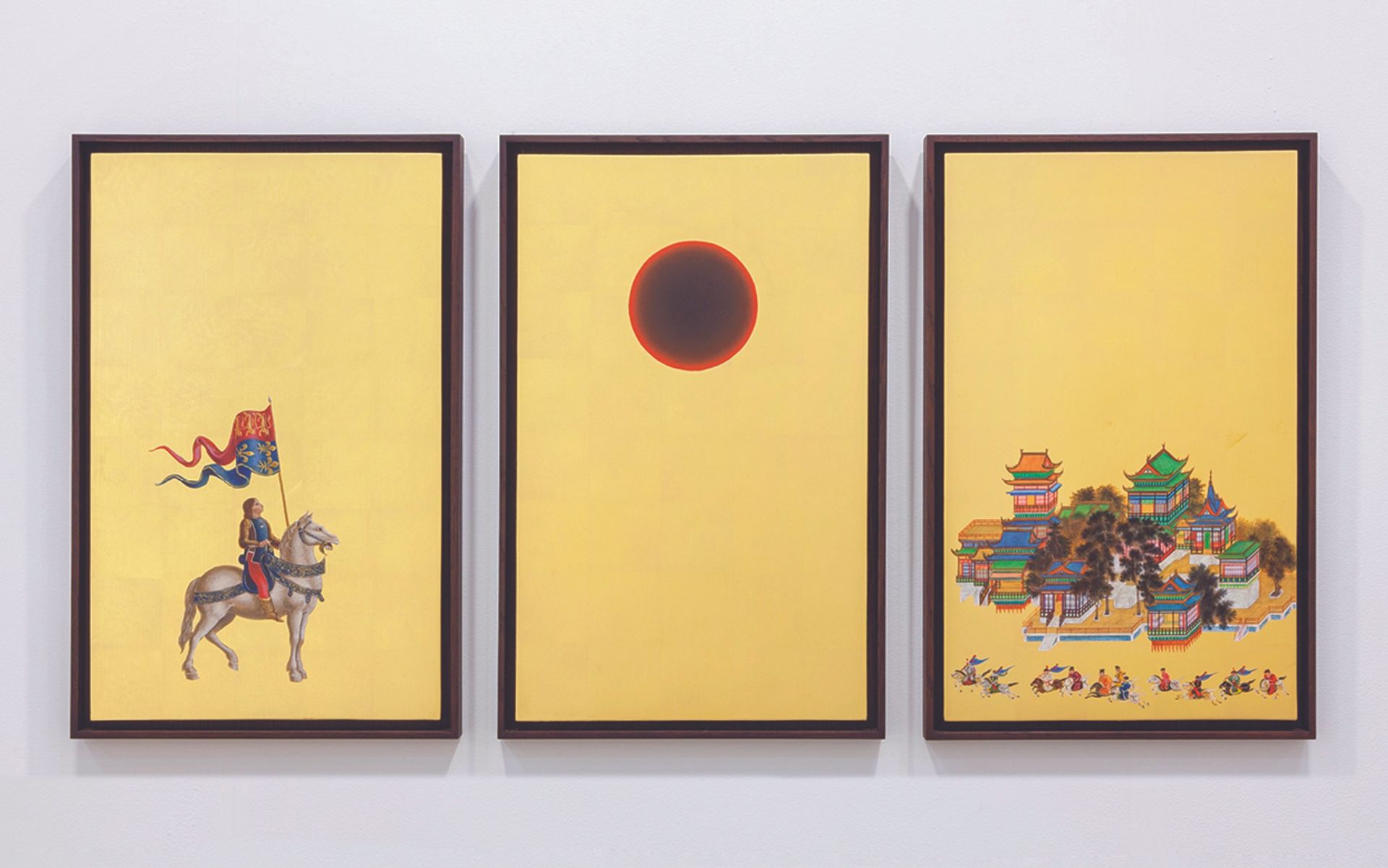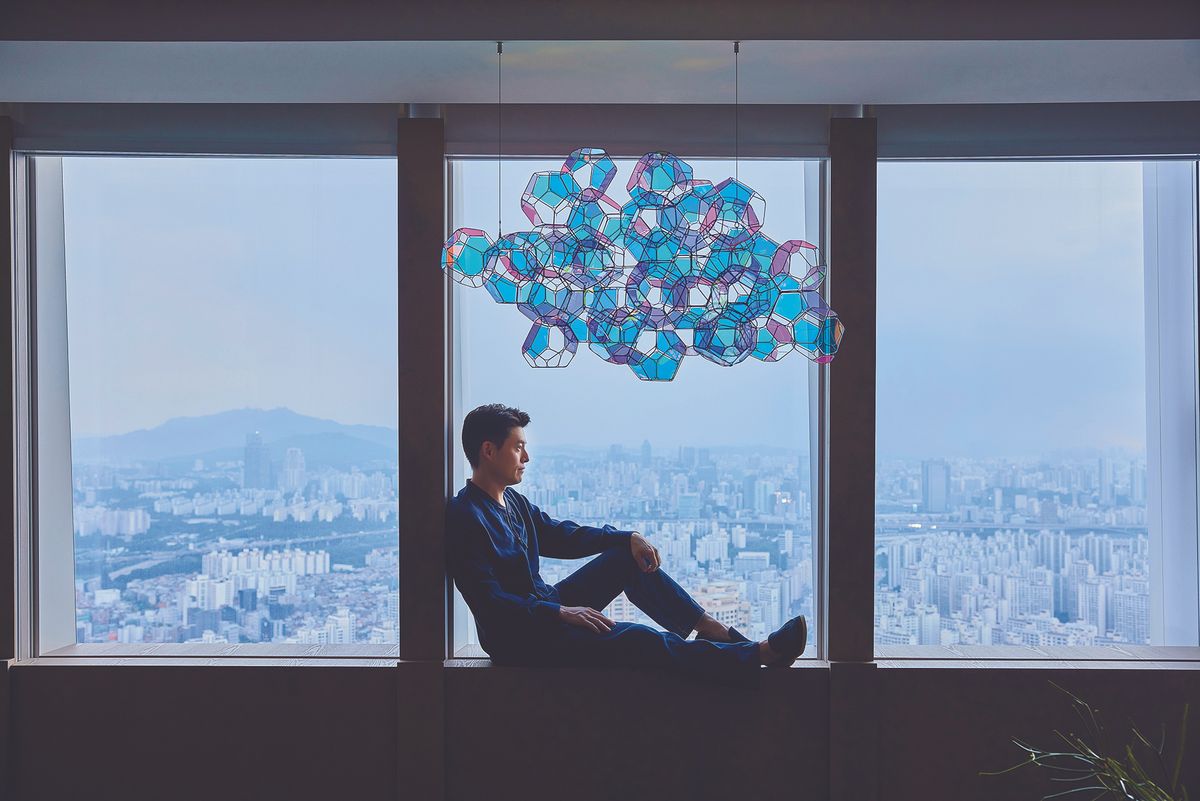Glass, mirrors and other shiny surfaces define the collection of the Seoul-based venture capitalist Tony Lyu, whose previous home had little wall space and an abundance of natural light due to its many large windows. “I was afraid of paintings getting damaged by the sun,” he says. Since he began collecting art five years ago, Lyu has gone from an avid interior decorator to an art fair regular who is now dedicating an entire floor of his new house to his growing collection—a mix of international heavyweights like Olafur Eliasson and Korean artists like Ha Chong Hyun, reflective of his global upbringing between South Korea, Japan and the US.
In his current role as a venture partner at SoftBank Ventures Asia, he has been able to mix his keen business sense with his love of art, including helping devise the strategy for @artart.today, South Korea’s largest Instagram account for showing artists and artwork to the general public. One of Lyu’s most significant business deals saw him create Korea’s first bitcoin exchange in 2013; he sold the company in 2017 and has largely divested himself of his cryptocurrency holdings.

Lyu's new home in Seoul has a whole floor devoted to art
Courtesy of Tony Lyu
However, his attitude towards the dramatic rise and recent crash of NFTs is relatively dispassionate: “Crypto doesn’t bear much weight on art. Besides the provenance factor I don’t see that much overlap.” Rather, he considers the rise in NFT art to be related to other forms of alternative investing that has gripped Korean millennials in the past decade, including music royalties, fractional investing and the reselling of luxury items like sneakers.
The Art Newspaper: What first turned you on to art?
Tony Lyu: When I was in college at The Cooper Union in New York studying engineering my room-mates were all artists. I was jealous that what they do is about self-expression. I later studied visual design to build my websites, and then studied philosophy after I sold my first company, which helps me understand the messages that the artists are trying to convey.
What was the first work you bought?
A hanging sculpture by Tomás Saraceno from 2019 (pictured above). It’s shaped like a cloud and made of Plexiglass. I bought it via Esther Schipper gallery, straight from the studio. My apartment at the time was in a skyscraper with clouds passing by the windows. The sculpture felt like a stray cloud that had wandered in and crystallised.

Lyu recently bought this triptych by the French artist Laurent Grasso from his series Studies into the Past, which combines traditional painting with a contemporary theme
.Courtesy of Tony Lyu © the artist
What was the last work you bought?
By coincidence, the last two works I bought both have an equine theme. The first is a painting by Tomokazu Matsuyama: it’s a horse rider on a large canvas. The second is also a painting, a triptych by Laurent Grasso, and it’s also of a horse rider in a landscape. Both are about blending Eastern and Western culture and mixing traditional painting with more contemporary themes. I’m drawn to works of this nature as they help me understand my identity as a global citizen, who respects tradition but wishes to go beyond its boundaries.
What do you regret not buying when you had the chance?
I find that if I am having a difficult decision [to make], the best option is not to buy, because you probably won’t be a good steward for that work. If it’s meant to be, it will be.
If you could have any work from any museum in the world, what would it be?
It’s a historical Korean piece called the Jikji—a Buddhist text that is the oldest surviving book in the world printed with movable metal type. Dated to 1377, it predates Gutenberg’s Bible. It is currently held by the National Library of France. I think it would be good to have it back in Korea.
Where do you like to eat and drink while you’re in Seoul?
For food: Monk’s Butcher, Lazy Farmers, Forest Kitchen. For coffee: Daelim Changgo, and Conhas in Hannam, which has an empty swimming pool in its courtyard.
What tip would you give to someone visiting Seoul for the first time?
In Seoul you either plan your day around traffic, or spend it in traffic.
Where do you go in Seoul to get away from it all?
The Han River, especially Ttukseom Hangang Park, you can rent kayaks and paddle boards. The river is wide and has a lot of peaceful spots—it’s one of the best bits of Seoul.


